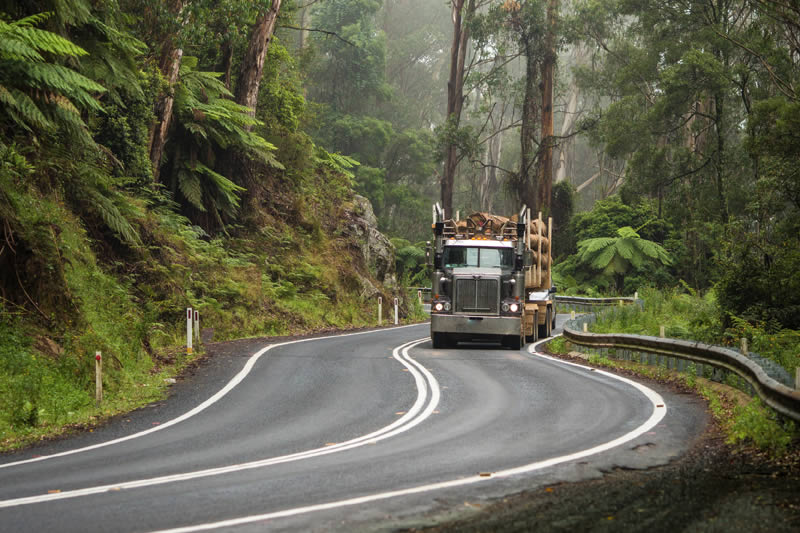Long read: A series of significant issues are contributing to major, ongoing supply issues in Australian timber.
Listen to our politicians at state and federal levels and you’d be forgiven for thinking that energy issues consume the national consciousness. They talk of export controls to guarantee domestic gas supply, government investment in coal or renewables and, in some quarters, government investment in maintaining or re-commissioning old coal-fired power stations. We’ve so far lost one Opposition Leader and two Prime Ministers over renewable energy (though that Opposition Leader later made it all the way to the top job with a revised pro-coal position). Meanwhile, all the average punter wants is a smaller power bill.
But while power is hogging the headlines, another major Australian shortage with major impacts is receiving only a fraction of the coverage: timber.
A lack of logs
Since late last year, builders have been flagging framing pine shortages and warning customers jobs may take longer and may cost more, especially for longer lengths. This at a time when timber is increasingly being specified for both its environmental and economic benefits.
Three key problems have converged to create this shortage. The first is simply that we haven’t enough trees to harvest. Huge bushfires throughout the years of the Millennium Drought – and the drought itself – damaged or destroyed valuable plantations, sending prices sky high and limiting availability.
Ill-fated investor schemes that used timber plantations as vehicles for tax breaks collapsed in the years around the GFC, damaging investor confidence at the same time as less public land was released for forestry, creating a chronic under-supply of pine in particular.
Responses to this issue are in the pipeline, such as the federal government’s $20 million forest industries injection in this year’s budget, the Victorian Government’s $110 million commitment for plantations in the Latrobe valley and the Next Generation Forest Plantation Investment research project at the University of Melbourne, funded by forest industry partners and the Australian Government through Forest and Wood Products Australia. But trees take time to grow.
The second problem is the US. It was at the vanguard of the influx of comparatively cheap sawnwood and other building timbers from international suppliers during the GFC and immediately after (at a time when new builds were virtually at a standstill in much of the US and UK, and slowed in Canada and Europe, but remaining buoyant in Australia).
Over the last few years, the US construction industry (particularly housing) has recovered well and timber use has been growing at close to 5% per annum. Product that was previously offered to the Australian and Chinese markets, among others, is now used at home, and what is available for import to Australia has risen in price.
The final problem is in our sawmill supply. While there were job losses in mills over the last decade – depending on who you talk to, these were caused by either an inability of some mills to keep up with their more efficient competition or by American and European imports distorting local prices – the sawmills currently operating are generally highly efficient and primed for growth. But having toughed it out through the difficult conditions caused by the GFC, many are not able to secure the log supplies they need to grow – often because those logs are being exported to China.
While there is little we can do in the short term to solve the first two problems, the third can be tackled.
Why China?
The Chinese economy may have come off the boil a little of late, but it is still hot. Chinese residential and non-residential construction completions are estimated at nearly 1.2 billion square metres this year, up from 585 million in 2008.
At the same time, the 13th Five-Year Plan, launched in early 2016, saw China ban commercial logging in natural forests from 2017 and significantly lower logging quotas overall in a practical bid to address problems arising from deforestation.
Pre-ban, imports accounted for roughly half of China’s total timber supply, now the figure is much higher. Australia has a longstanding trading partnership with China and timber has always been a strong part of this.
Ironically, China is also the source of many of our finished timber product imports, particularly boards and plywood. Different technologies in common use (such as spindle-less lathes that can use smaller logs than most Australian sawmills) make it an attractive market for plantation companies, as they can sell unusually small and large logs to China.
In the years when local sawmills were finding it uneconomical to compete with imports, some growers looked overseas to develop new markets to future-proof their plantations against Australian downturns. China welcomed Australian sawlogs, seeing them as a low-cost, high-quality product. And for Australian growers, Chinese contracts represented an additional layer of security for forward planning.
However, the balance has tipped to a point where exports are now harming domestic processors. Last financial year, 1.76 million cubic tonnes of logs were exported from the Green Triangle (south-east South Australia and south-west Victoria), representing over 70% of the total South Australian annual softwood harvest in 2014.
Processors in the region complain of not being able to secure contracts for logs and of having lengthy conversations with suppliers regarding contracts for fibre supply that continue for years without resolution. Meanwhile, logs continue to be exported.
Economic models
Of course, the problem with free market economics is that they are very rarely free. The forests now in private hands represent years of public investment, either directly, as in the case of South Australian forests sold off in 2012, or indirectly, as in NSW plantations on private land that have benefited from tax breaks.
When they are harvested and turned into sawnwood, frame and truss, and other finished products in Australia, we reap the tax benefits at each stage, covering the costs the nation has contributed.
When they are cut and shipped abroad, we pay to have them brought back as finished product, with vastly less in the way of jobs, taxes and other returns on our investment. Yet, as with mining, we’ve still paid for the asset. We still pay for the roads on which the trucks ship the logs down to the port. We just receive less in return.
While the processors are, like many growers and harvesters, private companies, almost all have made significant financial commitments to the forest industry and jobs growth in regional areas over many years. Many processors are family businesses, and all are physically limited in their ability to source new logs. If they are forced to close, they won’t be back.
While it is absolutely the right of companies to sell at the price that brings them the best return, multiple processors in the Green Triangle have complained to TTN that they are matching those prices and being knocked back.
“We want to grow our business,” said one notable industry figure, “but we can’t get the logs to do it.”
None would speak on record for fear of exacerbating already tense relationships between growers and processors.
Local voices
One voice that hasn’t been silent is the Federal Member for Barker, Tony Pasin. In May, he told the House of Representatives that forestry industries contributed about 10% of the regional income in his Mt Gambier electorate. But despite this economic significance, he considered the industry to be under-supported.
“Nationally,” he is recorded in Hansard as saying, “Australia is the seventh most-forested nation, but, sadly, we import much more processed timber than we export. Indeed, Australia has a trade deficit in wood products of more than $2 billion. The processing industry in forestry regions, like those in Barker, enjoys strong prospects for growth, but its growth is currently limited by the lack of access to domestic log supply – not because we don’t have access to that resource but because we are exporting that resource in the form of raw logs directly to overseas processors.”
Mt Gambier-based SA Independent MP Troy Bell told local paper The Border Watch, “We need to prioritise log supply to create local job opportunities. Currently there is not a level playing field for local businesses competing for log supply with the export market. There are hundreds of jobs that could be created in the South East if exports of raw log were reduced.”
SATPA, the South Australian Timber Processors Association, has also been flagging the need for governments and industry to take action and has been running a committed campaign in local media as well as targeting state and federal representatives. In January, a group of concerned manufacturers briefed Prime Minister Malcolm Turnbull on the situation, flagging the risk to industry and related jobs in communities that rely on every single wage.
While the $20 million for forest industries in the budget was a pleasant response, suggestions that government could take direct action have not been acted on.
With major new Australian softwood-based processing concerns, such as the Borg particle mill at Oberon in NSW and the XLam CLT manufacturing facility in Albury, NSW, the situation will only worsen.
Finding a fix
The most obvious solution – an export control on sawlogs similar to that in place on natural gas – is one that falls foul of most politicians’ love of free markets. Yet it is one that makes an immense amount of sense. Prioritising the Australian market won’t affect the number of trees harvested, and the flow-on benefits are comprehensive. It may even improve prices for what does go in export.
While growers and processors could come together to sell sawnwood lumber into the Chinese market – it’s the fastest growing of Chinese timber imports – domestic processors are aware this will do nothing to solve the local timber construction supply problem.
“Timber in Australia always be operating on a mix of imports, exports and domestic supply,” said a notable industry figure, “but we need to get it back to a more balanced approach, rather than simply shifting our difficulties to another part of the industry.”
“One of the problems,” said a prominent Victorian figure, “is that we don’t have a big lobby group, we don’t have a high-paid PR firm. Most of us are busy running our mills and taking care of our workers and families. But unless someone starts fighting our corner on this, nothing is going to happen. Except that we will start to lose opportunities, and then we will lose jobs, and ultimately mills will close.”
As with energy prices, this is not a problem that has arisen overnight. Unlike energy, we don’t have ten years where the market can run out of control while consumers bear the brunt. If domestic processors start to be pushed out of the market, it will result in higher construction prices, longer waits for material and an exacerbation of Australia’s already extensive housing unaffordability problems.
This article is merely an introduction. In upcoming issues of TTN we will investigate this story from multiple angles, including talking with growers and politicians. We welcome contributions from interested parties, and can respect anonymity.
For further discussion, email donyale.harrison@paragonmedia.com.au












